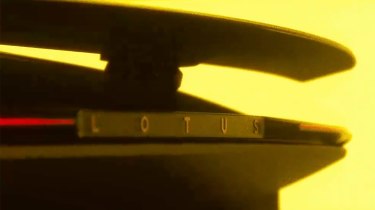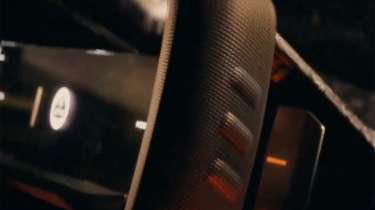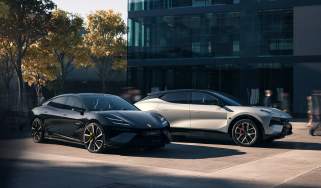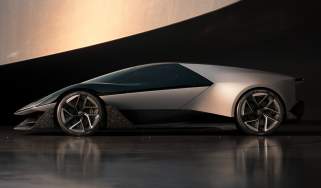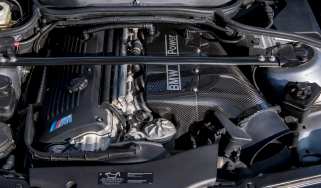The new Lotus Theory 1 could hint at the Emira's EV successor
The Lotus Theory 1 concept will be unveiled on 16 September, potentially hinting at the Emira's electric replacement
On 16 September, Lotus will pull the covers off the Theory 1; a concept that could provide an early look at the firm's electric Emira replacement. Lotus has previously confirmed that its first electric sports car, codenamed Type 135, will be built at Hethel and is scheduled to enter production by 2027.
Teasers on social media provide various glimpses of the show car, which will feature active aero, forged carbonfibre trim and a rectangular steering wheel with a screen in its centre. The interior in particular doesn't look like that of a production car, suggesting that the Theory 1 will preview something destined for showrooms in the future.
Earlier this year, Lotus's former Chief Commercial Officer Mike Johnstone outlined the company's short term product plans, which centre around EVs built on two continents - China and Europe.
Currently, petrol-engined Emiras featuring the ageing Toyota V6 and Mercedes-AMG’s 2-litre four-cylinder engine are built at the Chapman Production Centre at Hethel, which has benefited from £500 million of investment since Geely took a 51 per cent stake in the business in 2017.
With Lotus confirming that the Emira will be its last ICE car, Hethel has been earmarked to become the home of the new Type 135 sports car. Due to be revealed in 2025 with first deliveries scheduled for 2027, the battery powered car will be built at Hethel in the production hall currently occupied by the Emira.
Expected to cost from around £70,000, the Type 135 will be the fourth battery electric vehicle in the Lotus line-up, with a new D-segment SUV set to be revealed this year and delivered to customers in 2026, joining the Emeya GT and Eletre SUV.
As with the Eletre and Emeya, the Type 134 – a BMW iX3-sized SUV – will be built in Wuhan under the Lotus Technology brand, while the Type 135 will join the Evija hypercar under the Lotus Cars umbrella and be built in Norfolk. While the UK team will lead the electric sportscar’s development, the company’s Frankfurt-based R&D division and Chinese technology arm will be instrumental in its conception.
Talking of development, the Evija hypercar is expected to be signed off and completed this year, ready for 130 examples to be built with deliveries starting before 2025.
Lotus has aspirations – and capacity – to produce 150,000 cars in Wuhan by 2028, with Hethel adding in the region of 5000 units to that total. Lotus plans to facilitate this growth by expanding its dealer network to over 320 ‘stores’ globally in the next 12 months.
We'll have a clearer picture of what the future of Lotus looks like when the Theory 1 is unveiled next week.
